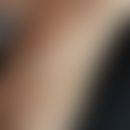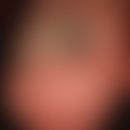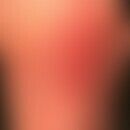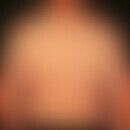Synonym(s)
DefinitionThis section has been translated automatically.
Royal jelly consists of the secretions of the hypopharyngeal glands of young worker bees. The bee larvae are fed with this mixture during the first three larval stages, which gives them a boost in growth and development. The larva of the worker bee is then fed only pollen and honey; the larva of the future queen bee, on the other hand, is fed royal jelly until her cell is covered (Kamakura M 2011). To obtain royal jelly, the queen is removed from a bee colony and prefabricated queen cells are inserted into the hive. In one bee season, one bee colony can produce about 500 g of royal jelly.
Ingredient(s)This section has been translated automatically.
Royal jelly contains carbohydrates, protein, B vitamins and trace elements. The most important ingredients are:
- 10-23 % sugar
- 60-70 % water
- 9-18 % proteins and amino acids (Major royal jelly proteins (MRJPs) are a family of proteins secreted by the honeybee. The family consists of 9 proteins, of which MRJP1 (also called royalactin), MRJP2, MRJP3, MRJP4 and MRJP5 are contained in the royal jelly excreted by worker bees. MRJP1 is the most commonly found protein. These 5 proteins make up 82-90% of the total proteins in royal jelly. MRJP1 was first isolated as a single molecule (monomer) by Kamakura M. et al. at Toyama Prefectural University in 2001.
- 4-8 % fats
Also: thiamine, riboflavin, pyridoxine, niacin, pantothenic acid, biotin, folic acid, sterols, biopterin, juvenile hormone and neopterin, minerals and trace elements. 4-hydroxybenzoic acid methyl ester as natural preservative.
There is an international ISO standard for royal jelly (ISO12824:2016). This distinguishes 2 quality levels, which depend on the feeding conditions of the people. At the higher quality level the bees receive only natural food. In the second quality level the bees are additionally fed with a feeding solution.
You might also be interested in
Complication(s)This section has been translated automatically.
The consumption of royal jelly may lead to allergic type I reactions, particularly due to its content of proteins and amino acids. For example, after taking preparations containing royal jelly, the occurrence of oral allergy syndrome (Paola F et al. 2014), angioedema, asthma attacks (Thien FC et al. 1996), vomiting, diarrhoea or a drop in blood pressure has been observed. Life threatening anaphylaxis has been described several times (Mizutani Y et al. 2011). MRJP1 and MRJP2 have been identified as major allergens. There are no relationships to bee venom allergy sufferers. However, pollen sensitisation has been described frequently (cross-reactions?) (Jäger L et al. 2001)
Note(s)This section has been translated automatically.
Besides propolis, royal jelly(royal jelly extract; royal jelly powder) is used in cosmetic preparations and in food supplements; it is no longer of any significance as a starting material for medicinal preparations.
LiteratureThis section has been translated automatically.
- Buttstedt A. et al (2018) How Honeybees Defy Gravity with Royal Jelly to Raise Queens. Current Biology doi:10.1016/j.cub.2018.02.022.
- Guendouz M et al. (2017) Preventive effects of royal jelly against anaphylactic response in a murine model of cow's milk allergy. Pharm Biol 55:2145-2152.
- Jäger L et al (2001) Food allergens. In Jäger L et al (ed.) Food allergies and intolerances. Urban&Fischer publishing house p.170
- Kamakura M (2011) Royalactin induces queen differentiation in honeybees. Nature 473:478-83.
- Mizutani Y et al (2011) Major royal jelly protein 3 as a possible allergen in royal jelly-induced anahttps://www.ncbi.nlm.nih.gov/pubmed/?term=Masaki+Kamakura+2011+naturephylaxis. J Dermatol 38:1079-1081.
- Okamoto I et al (2003) Major royal jelly protein 3 modulates immune responses in vitro and in vivo. Life Sci 73:2029-2045.
- Paola F et al (2014) Oral allergy syndrome in a child provoked by royal jelly. Case Rep Med:941248.
- Thien FC et al (1996) Asthma and anaphylaxis induced by royal jelly. Clin Exp Allergy 26:216-22.




